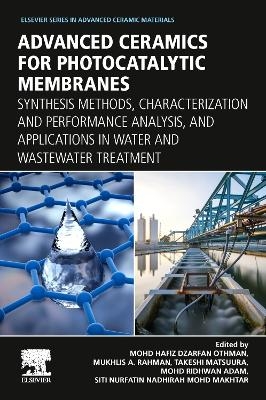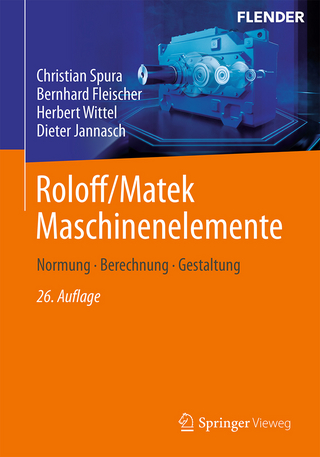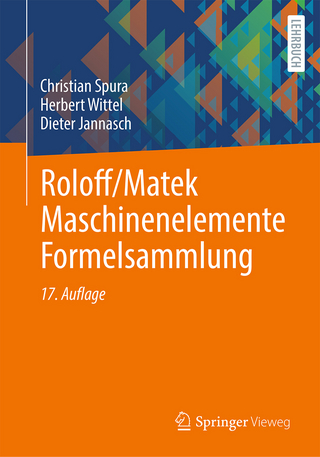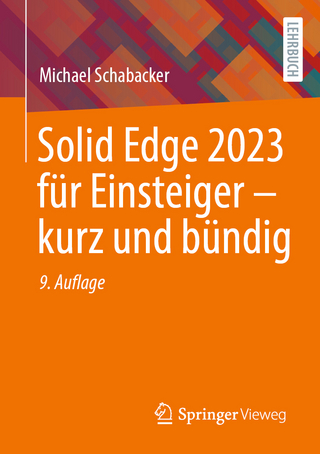
Advanced Ceramics for Photocatalytic Membranes
Elsevier - Health Sciences Division (Verlag)
978-0-323-95418-1 (ISBN)
Mohd Hafiz Dzarfan Othman is an Associate Professor in Department of Energy Engineering, Faculty of Chemical and Energy Engineering; the Deputy Director of Advanced Membrane Technology Research Centre (AMTEC); and also Head of the Renewable Energy Research Group, Universiti Teknologi Malaysia, Malaysia. He received his Bachelor and Master degrees from Universiti Teknologi Malaysia, and PhD from Imperial College London, United Kingdom. Dr. Othman’s current research focus is on development of inexpensive ceramic/polymer membranes for environmental protection and energy generation. Until 2017, he has supervised 29 PhD students and 19 Master degree students and has published almost 100 articles in Scopus-indexed journals, with an h-index of 15. He has been the principal investigator in 20 research projects (including two international grants) and co-investigator in another 50 projects, with a total worth of RM 16million (about USD 4million). Through these projects, he and his research team have successfully developed a novel membrane for the treatment of recalcitrant organic pollutant in water as well as an economical fuel cell for efficient electricity generation. He has been granted two patents and 10 more are currently being examined. Dr. Othman is an active member of the Young Scientist Network-Academy of Science Malaysia (YSN-ASM), a group of outstanding young scientists of Malaysian nationality with an age less than 40 years old who have the capability to contribute to strengthening the Malaysia scientific community. He was also selected as a member of the prestigious Global Young Academy (GYA). Dr. Mukhlis A. Rahman is a Senior Lecturer in the Faculty of Petroleum & Renewable Energy Engineering, Universiti Teknologi Malaysia (UTM), Johor, Malaysia. He received a Bachelor’s degree in Chemical Engineering from Universiti Teknologi Malaysia in 2004. He began his academic career as a tutor in the Department of Gas Engineering, UTM. He obtained a Master’s of Engineering (M. Eng) in 2006 before was appointed as Lecturer at UTM. In 2007, he undertook his PhD studies at Imperial College London, United Kingdom, focusing his research on ceramic hollow fiber membranes with micro-reactor characteristics. After receiving his PhD in 2011, he was promoted to Senior Lecturer at UTM. He is currently supervising a number of PhD students and Master degree students, with current research interests in inorganic/ceramic membranes for fluid separation. To date, he has published one original research book and more than 100 articles in refereed journals, with an h-index of 15. He has also led 12 research grants and has been a member of more than 50 research projects. Professor Takeshi Matsuura is a senior academic with a career spanning more than 50 years and has held several distinguished posts in many countries including the USA, Canada, Japan, Germany and Singapore. Most recently he joined the University of Ottawa (1992) as the British Gas/NSERC Industrial Research Chair. He served as professor of the Department of Chemical Engineering and the director of the Industrial Membrane Research Institute (IMRI) until he retired in 2002 and was appointed as professor emeritus in 2003. He received the Research Award of International Desalination and Environmental Association in 1983. He is a fellow of the Chemical Institute of Canada and a member of the North American Membrane Society. He has delivered plethora of invited lectures and presentations to many of the world’s foremost scientific events and conferences. He has published over 400 papers in refereed journals, authored and co-authored 6 books and edited 8 books. A special symposium was held at the Eighth Annual Meeting of the North American Membrane Society to honour Prof. Matsuura (together with Dr. S. Sourirajan) for life-long contributions to membrane research and a similarly the International Conference on Membrane Science and Technology 2013 was held in his honour. In addition, he has received the George S. Glinski Award for Excellence in Research and the occasion of his 75th birthday was marked with a special edition of the journal Desalination. Mohd Ridhwan Adam currently holds the position of Senior Lecturer at the School of Chemical Sciences, Universiti Sains Malaysia. He completed his Ph.D. in Chemical Engineering from Universiti Teknologi Malaysia (UTM), Skudai. His academic journey encompassed a focus on Chemical Science, with his bachelor’s and master’s degrees earned from Universiti Sains Malaysia in 2010 and 2014, respectively. Previously, he was engaged in a significant project centered around remediating ammonia-contaminated effluent. This project notably involved the innovation of an adsorptive ceramic membrane derived from natural zeolite. Additionally, he played an integral role in an industrial collaborative effort, which entailed treating industrial effluent using an integrated UF-RO membrane system. Owing to his extensive expertise in this domain, he has been an active participant in numerous local and international conferences. Throughout his academic pursuits, he achieved remarkable milestones, including distinctions such as the best presenter compliment at conferences, recognition at exhibitions, and multiple awards at both university and national levels. His profound proficiency in the scope of wastewater treatment serves as a focal element in his contribution to the authorship of this book. Siti Nurfatin Nadhirah Mohd Makhtar is a Post-Doctoral Fello in the Advanced Membrane Technology Research Centre at the School of Chemical & Energy Engineering, Faculty of Engineering, Universiti Teknologi Malaysia, Malaysia.
1. Current developments in photocatalytic membranes
2. Modelling, simulation, and the theory of mass transfer mechanisms in photocatalytic membranes
PART ONE: SYNTHESIS AND FABRICATION OF PHOTOCATALYTIC MEMBRANES VIA PHYSICAL APPROACHES
3. The blending technique for fabrication of photocatalytic membranes
4. The sputtering technique in fabrication of photocatalytic membranes
5. The dip-coating technique in fabrication of photocatalytic membranes
6. The spray-coating technique for fabricating photocatalytic membranes
PART TWO: SYNTHESIS AND FABRICATION OF PHOTOCATALYTIC MEMBRANES VIA CHEMICAL APPROACHES
7. The grafting process and its use in the fabrication of photocatalytic membranes
8. The hydrothermal and solvothermal process and its effect on photocatalytic activity
9. The electroless plating process in fabrication of photocatalytic membranes
PART THREE: CHARACTERIZATION AND PERFORMANCE ANALYSIS OF PHOTOCATALYTIC MEMBRANES
10. Morphological analysis of photocatalytic membranes
11. Physical analysis of photocatalytic membranes
12. Chemical analysis of photocatalytic membranes (FTIR, XRD, UV-Vis/Optical, XPS, zeta potential)
13. Permeation performance analysis of photocatalytic membranes
14. Photodegradation performance of photocatalytic membranes (Type of light [UV light, visible light], effect of light intensity, effect of pH, effect of photocatalyst dosage)
PART FOUR: APPLICATIONS OF PHOTOCATALYTIC MEMBRANES
15. Photocatalytic membranes for the efficient removal of dyes in wastewater treatment
16. Photocatalytic membranes for oily wastewater treatment
17. Photocatalytic membranes for removal of endocrine disrupting compounds (EDCs) in wastewater treatment
18. Antifouling and self-cleaning photocatalytic membranes in wastewater treatment
19. System scale-up from the laboratory to the pilot scale system
20. Economic viability and cost analysis for photocatalytic membranes
| Erscheinungsdatum | 25.05.2024 |
|---|---|
| Reihe/Serie | Elsevier Series in Advanced Ceramic Materials |
| Verlagsort | Philadelphia |
| Sprache | englisch |
| Maße | 152 x 229 mm |
| Gewicht | 1000 g |
| Themenwelt | Technik ► Maschinenbau |
| Technik ► Umwelttechnik / Biotechnologie | |
| ISBN-10 | 0-323-95418-9 / 0323954189 |
| ISBN-13 | 978-0-323-95418-1 / 9780323954181 |
| Zustand | Neuware |
| Informationen gemäß Produktsicherheitsverordnung (GPSR) | |
| Haben Sie eine Frage zum Produkt? |
aus dem Bereich


